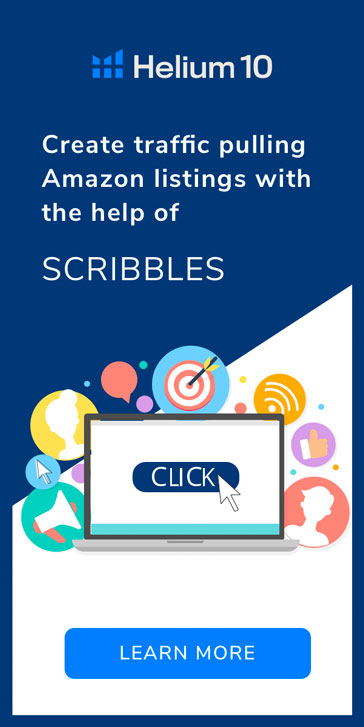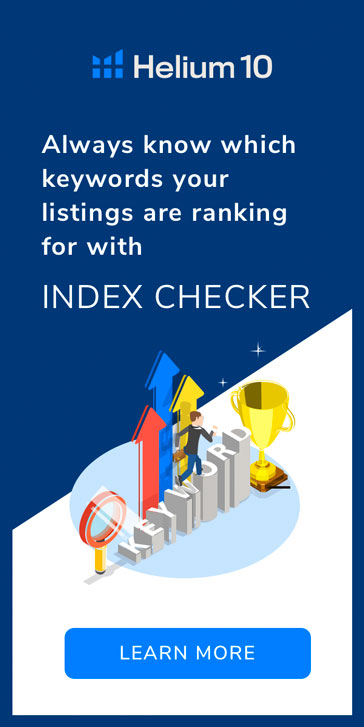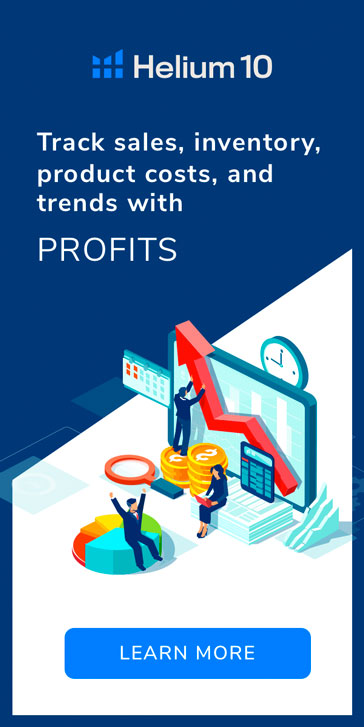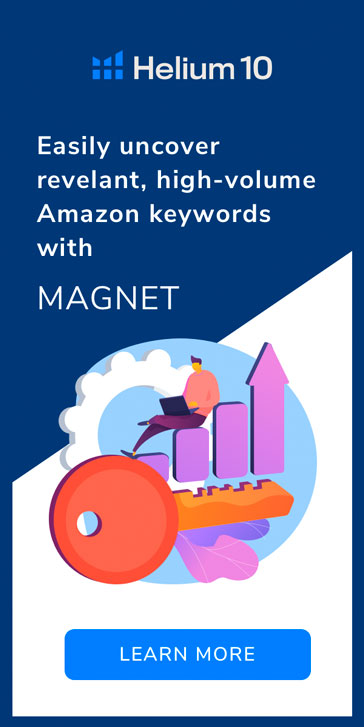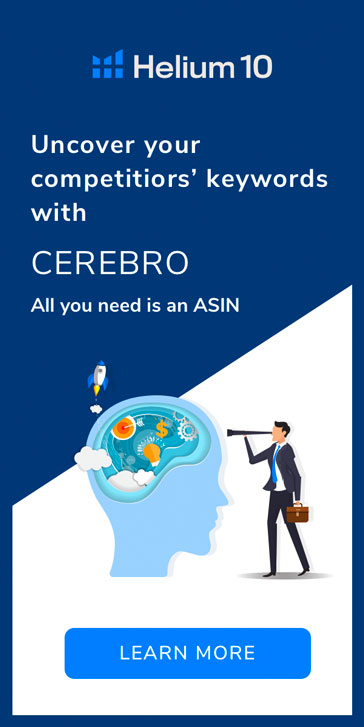Looking back on the last 2 years, I’m still amazed at the river of money Amazon has provided for so many people – from stay-at-home moms to major household brands. And while it’s not always good news (nothing ever is in business) the opportunity is still very real and I believe will continue to get even better. However, as more competition has entered the marketplace it means sellers must bring their best cards to the table if they’re going to win. We wanted to write a comprehensive guide to Amazon SEO that not only explained how Amazon’s search engine works, but the specific methods and tools we’re using today to help our clients optimize their listings and crush it on Amazon.
The beauty and burden of Amazon’s search engine (aka A9) is it’s simplicity. Amazon provides a very simple-to-use interface where sellers can populate all the data relevant to their product. Once you know what to put in these fields, it makes it very easy to implement any changes. However, because A9 is a maturing algorithm, frequent and unpredictable updates are a common point of frustration for many sellers on Amazon. In turn, I’ve done my best to include the most up-to-date recommendations based on both Amazon’s documentation and our own observations after managing 1000s of Amazon listings. However, the observations and recommendations I make in this guide are subject to change. Therefore, I encourage you to revisit this guide frequently and check the comments section often.
How To Get a 320% Increase in Sales In Less Than 10 Minutes
One of my favorite clients in the entire world is Debbie. In one word, she’s awesome. She has passion and truly believes in her products and how they can improve people’s lives. Unfortunately, that passion didn’t translate into many sales because she wasn’t into all that “technical stuff” and she had done a poor job of building a solid listing. In fact, she had done a very poor job – like “how have you even sold a unit?” poor job. So, on day one we decided to focus on 3 parts of her listing – images, title and backend search terms (you’ll learn why these are SO important in a bit). She made the changes and within 10 minutes the changes were updated and live. Then, we waited. Before working together, Debbie was selling about 5 units per day, give or take a unit or two. The next morning I woke up to 4 missed text messages. She made 2 sales before 7am – this had never happened. By the end of that day, she had made 16 sales and this has been the new normal ever since.
While I can’t guarantee a 320% increase in sales, I can assure you this guide will help you bring your absolute best to Amazon so you’re ready to compete. I’ll first cover a bit about Amazon, A9 and ranking factors in the algorithm. Then, I’ll dive deep into how we create killer listings that help us compete with and crush our competition.
The One Thing To Remember
If you only get one thing from this guide, it should be this…Amazon cares about buyers and selling stuff to those buyers. That’s it. Yes, that is quite possibly the most obvious statement made by anyone ever. But, if you can remember this anytime you are making changes to your listings, and balance that with your own interests, you’ll quickly start making decisions that will help your products sell on Amazon.
What differentiates A9 from Google Search or other top search engines is Amazon is a buying platform. As consumers, we rarely hop on Amazon just for product research. We are usually very close to the point of purchase and Amazon knows this. In turn, Amazon will continually make changes to test what makes shoppers buy more frequently. Therefore, we need to make changes that will help shoppers convert more frequently. This includes making our products more visible than our competitor’s, so shoppers find us more often. Additionally, we need to make changes that move shoppers to buyers.
Should you have more images? What should you put in the title? What price should you sell at? Just remember, Amazon cares about buyers and selling stuff to those buyers. Help Amazon and you’ll help yourself.
Say Hello to A9
I’m going to talk a bit about Amazon’s search engine, but only if you promise not to start using “A9” in every other sentence when you’re talking to other sellers. As mentioned earlier, it’s definitely a maturing algorithm and will continue to become more complex over time. However, for the time being, it operates on what appears to be a very simple keyword search method without much, if any, regard for how closely a product matches the query. Let me show you an example below. I’ve used the customer search term “Dr tobias multivitamin” and you can see there are 3 results:

When I simply add my name “Bryan” to the search, there are no results because Dr. Tobias doesn’t have my name anywhere in their product listing – which is nice to know, I guess:

In a more relevant example, look at the search results for “multivitamin” and the number of results that appear:

Now, look at how the competition gets dramatically reduced when I simply using the variation “multivitamin”:

So, the competition has been cut by more than half by simply using a common variation of the search query. So what does that tell you? Make sure you’re populating as many relevant terms as possible for your listing if you want to increase your visibility, sales, and overall rank in the search results. We’ll discuss the “how” in a bit.
Essentially there are 3 things you need to optimize for: Visibility, Relevance, Conversions. More simply, you want to make sure customers will See, Click and Buy your product. According to Amazon:
“Customers must be able to find your products before they can buy your products. Search is the primary way that customers use to locate products on Amazon. Customers search by entering keywords, which are matched against the information (title, description etc.) you provide for a product. Factors such as degree of text match, price, availability, selection, and sales history help determine where your product appears in a customer’s search results. By providing relevant and complete information for your product, you can increase your product’s visibility and sales. Below are some general guidelines to improve your product listings.”
So, let’s have a look at the different pieces of the listing and how we can start optimizing each of them. I’ll cover the different ranking factors in 3 categories: Product, Performance and Anecdotal. For Anecdotal, there’s no supporting Amazon documentation, however, we’ve seen a strong correlation between Search Engine Ranking Position (SERP) and these factors.
The recommendations I’m going to make below are just that, recommendations. I highly encourage you to understand your contract with Amazon and their terms of service. In particular, the documentation on listing optimization.
PRODUCT
Title – The Most Valuable Real Estate On Your Listing
By far, your product title is the part of your listing that will have the greatest impact (both positive and negative) on product performance. According to Amazon, your title should contain elements such as:
- Brand
- Product Line
- Material or Key Feature
- Product Type
- Color
- Size
- Packaging/Quantity
The secret to an effective title is how you order these elements along with one other major ranking factor – additional target keywords. In our experience keyword order and keyword choice can dramatically influence product sales and rank. First let’s discuss order, then we’ll address our favorite way to determine the best keyword choices for a particular product.
Look and the 3 images below…do you notice anything different in these 3 pictures?

These are screenshots of the same product result as they appear in organic results, right rail ads, and mobile. Did you notice the HUGE difference between all 3 of these? Yes, the number of characters in the title! Title in organic results typically have between 115-144 characters depending on the product/category. Titles in right rail ads have around 30-33 characters and mobile titles have between 55-63 characters. So what does that tell us? We must place the absolute most relevant keywords first. This has both practical and “algorithmic” implications. From a practical standpoint, we want to make sure every customer, regardless of search result location, knows exactly what we’re selling. Anecdotally, the algorithm correlates higher relevance with keywords that appear earlier in the title. Therefore, we recommend making a list of your most important keywords and strategically placing them before each character breakpoint in the title.
One very common question with clients is should they use the brand name in the title or not. This particular company has chosen to use VITA ONE at the beginning of the title. Additionally, Amazon’s style guide recommends leading with the brand name. Frankly, this is something you should test with your own product to see what converts best. We generally always lead with the brand name to establish our clients’ brands as legitimate companies and not generic “multivitamins.”
One thing to note, don’t keyword stuff your titles. This was a common strategy a few years back. Both shoppers and Amazon are wise to this and it’s no longer effective and may results in an adverse impact to sales. The backend search terms, however, are a great place to keyword stuff and we’ll cover that shortly.
Title – Action Steps
Whether you have an existing listing or a brand new one, chances are you can always make some tweaks to help optimize for more visibility and sales. The challenge with a brand new listing is you don’t have any product data to lean on, so it’s important to see what’s currently working for your competitors and replicate that. Fortunately, there are tools that help us determine what’s working. My two favorite tools are Helium 10 – Magnet, and Keyword Inspector. By looking at competitor listings and using these tools, we can determine the best words and placement to start with. From there, we can use a PPC campaign for Amazon to gather data on which terms help our listing convert and optimize for those keywords – we call it the “optimization cycle” (sounds fancy right?).
The steps are actually pretty straightforward. Use Magnet to research the most popular 2 or 3 keywords for your product. Additionally, use Keyword Inspector to do an ‘Extensive Reverse ASIN’ search on your top competitor. Try to pick a competitor in the top 3 spots with the most reviews. This is generally an indication they’ve been selling longer and will provide more data. Once you have these 3-4 sets of data, combine them and remove any search terms that are irrelevant to your product. Then, use a word and 2-word phrase frequency counter and start writing out your title based on this frequency. The Helium 10 Scribbles Tool is great for this. You’ll want to make sure the title reads naturally, yet contains all of the essential elements of the product along with target keywords. Again, look at your top competitors for guidance.
Make use of special characters, like the ones below, to add some style and naturally break up phrases:
- |
- ,
- &
- –
Next, let’s discuss the bullets and how we can further entice shoppers to buy.
Bullets – Another Chance to Increase Conversions, Relevance and Rank
While the bullet points don’t directly impact your rank in the search results, they are an opportunity to influence 2 very important factors in the SERP: Conversion Rate and Product Relevance.
The listing bullets are an opportunity to present the features and benefits of your product. Most sellers will tell you they know this, yet I’m surprised how often people get them mixed up. For example, leather seats are a feature and the feeling of luxury and arriving refreshed are benefits.
Also, just like the title, words used in the bullets will be indexed by the algorithm and be used to help identify your product when customers use the search bar. However, in our experience, terms in the bullets don’t carry the same weight as those in the title.
Bullets – Action Steps
Essentially, whatever keywords weren’t used in the title, from the master list you compiled earlier, should be worked into the bullets. Again, Helium 10 – Scribbles is an awesome tool for building out your listing as it simultaneously eliminates words from your master list as you populate your listing details. This is also a good time to point out products your listing may be compatible with. For example, if you’re selling a phone case you may point of several brands and models it’s compatible with. Hint: In most cases, these terms will get indexed so your listing can appear for searches like “Samsung phone case” or “Galaxy s7 phone case.”
Also, if you have a product warranty, most sellers will typically include these details in the last bullet. In general, we highly recommend testing the copy and order of the bullet points. On occasion, we’ve seen different combinations result in higher conversions.
Product Description – Tell a story
Much like the bullet points, the product description doesn’t directly impact rank, however, it is indexed and will impact visibility. Additionally, well written copy with a strong call to action can certainly have an effect on conversions. This is a great time to tell a bit about your brand and product – while throwing in some valuable keywords you want indexed. Also, make sure to include a strong call to action at the end. Make it direct and to the point (i.e. Buy Now, Order Today, etc.)
Product Description – Action Steps
Again, this is a great opportunity to keep using the Helium 10 – Scribbles Tool and include as many keywords as you can while still writing engaging copy.
Another tip is to make use of simple HTML. My favorite tool for converting text to HTML is Word to Clean HTML. It’s free and very easy to use. Simply paste your formatted text and click convert. You can then paste the HTML into your product detail page.
Backend Search Terms – Keyword Stuff like it’s 2014…I’m kidding, sort of.
Way back in the days of Amazon FBA, around 12-18 months ago, people would create the ugly keyword stuffed titles, bullets and descriptions. Like really ugly:

Thankfully, the market and the algorithm will penalize you for this type of behavior. However, there is a place you can stuff all of the remaining keywords from your master list – the backend search terms!
These terms are not visible to customers, yet get indexed just like the terms in your bullets and description. This is a great place to type any terms that will complete and long tail searches as well. For example, if you sell a sleeping bag and couldn’t stylishly insert the terms “…for camping that fits 2 big boned people”, the backend search terms are perfect for that.
TIP: It’s also a great place to drop common plural forms of main keywords, Spanish terms, misspellings, and words commonly used in your niche. For example, if I sold dog accessories, I may include the top 50 or 100 dog breeds since most owners will search “dog collar for Labrador.” As for misspellings, Amazon says they account for them but our experience shows otherwise, so we include them.
Backend Search Terms – Action
Just like before, keep using your Helium 10 – Scribbles Tool to knock out the remaining terms you didn’t capture in the title, bullets and description. Note, there’s no need for commas. Just separate the terms with a space. Another thing to note is you don’t need to duplicate keywords in your listing. Once a term is typed in the title, bullets, description or backend search terms, you don’t need to repeat it anywhere else.
Selection – A quick word
Selection is named as one of the ranking factors, although we have not noticed a correlation between selection and the SERP.
PERFORMANCE
Sales are King
After all the testing we’ve done, nothing moves the search rank needle like sales. In particular, your sales velocity relative to your competition. A spike in sales that your competition didn’t see will dramatically impact your ranking position. As you can imagine, this is very can be tough to accomplish when you first list and appear somewhere on page 20…especially when only 30% of customers ever make it to page 2!
Your first option for generating sales is by driving both internal and external traffic to your Amazon listing. This is part of the full management service we offer our clients. You drive internal traffic via Amazon PPC and external traffic via outside ads like Facebook, Google AdWords, etc. Commonly, our clients will use one of the following strategies for their external traffic:
- Ad to Amazon Listing
- Ad to Pre-Sell Page to Amazon Listing
- Ad to Squeeze Page to Opt-In for Single Use Discount Code delivered by email
- Ad to Product Sales Funnel
Second, you can use a launch service. Launch services are meant to create a natural spike in sales that moves the product up the ranks. Ultimately, whether this rank “sticks” will depend on the organic demand for the product once it becomes visible on page 1 or 2. There is some controversy surrounding these services and whether they violate Amazon terms of service, so please use them at your own discretion. One service that has impressed me is Viral Launch. They have a proprietary system that can help move products up the SERP without violating Amazon TOS and they happen to have great customer service.
Reviews are Queen
If sales are King then reviews are Queen. Amazon knows customers rely on reviews to make informed decisions about their purchases. That is why Amazon has been cracking down so hard on fake review services where people are getting paid to write fake positive reviews. They serve as social proof and let buyers know it’s safe to spend their money on your product – plus who want to be “the first to leave a review for this product?”
Additionally, reviews factor heavily into product rank in the search results. I can recall a product one of our clients launched that started selling really well from day 1 with no reviews. However, it could never break past the page 5 mark. Once the first 2 reviews came in, the product jumped to page 2. Sales continued to come in and once the product received it’s 10th review it hit page 1 almost the same day. So the moral of the story is, do what you can to get honest and unbiased reviews as soon as possible.
That being said, A LOT has changed recently regarding customer reviews and what Amazon considers incentivized reviews. Basically, you can’t provide any incentive (which typically means a discounted product) in exchange for a review – even an “unbiased” one. Keep in mind, this is not the same thing as someone who bought your product at a discount leaving a review…the former specifically targets the buyer, while the latter is just part of the buying process. In turn, we’ve chosen to be completely safe and are not using review services for the time being. Instead, we are using outside traffic and sales funnels, which I’ll go into more in my next post.
For now, make sure to get an email feedback sequence in place that communicates with buyers through the buyer-seller messaging service in seller central. Two of our favorites are Feedback Genius and Sales Backer. With these services, you can write custom email sequences to your buyers that help develop a customer relationship and encourage buyers to leave their reviews.
ANECDOTAL
In this section, I’ve lumped a few ranking factor observations we’ve made that aren’t directly documented by Amazon but seem to have an impact on the SERP.
FBA
Items that are Fulfilled by Amazon seem to rank higher than items Fulfilled by Merchant, all else being equal.
Brand Name
It appears a brand name which also happens to contain the main keywords may help increase organic rank in search.
Seller Name
Same as brand name, it appears seller name may help increase organic rank if it contains the main keywords for the product.
Other fields in the edit product page
Make sure to fill out all applicable fields in the edit product page as some of these have been shown to influence rank position and filtering in search.
Photos
Not only do quality photos that zoom influence conversions which certainly impacts rank in search, it appears that more photos is positively correlated with rank in the search results.
Conclusion
If you’ve made it this far, you’re well ahead of most sellers I’ve ever met. You now know that Amazon’s search engine has a name and you have a solid understanding of how it works. You also know enough to be dangerous when it comes to the different components of a product detail page and the effect it can have on your rank in the search results.
Best of all, you have practical action steps you can put into place today.
Until next time, keep crushing it in your businesses and reach out if you have any questions, bryan@amzprofitpros.com
Original Post from Supercharge Your Sales: A Seller’s Guide to Amazon SEO














